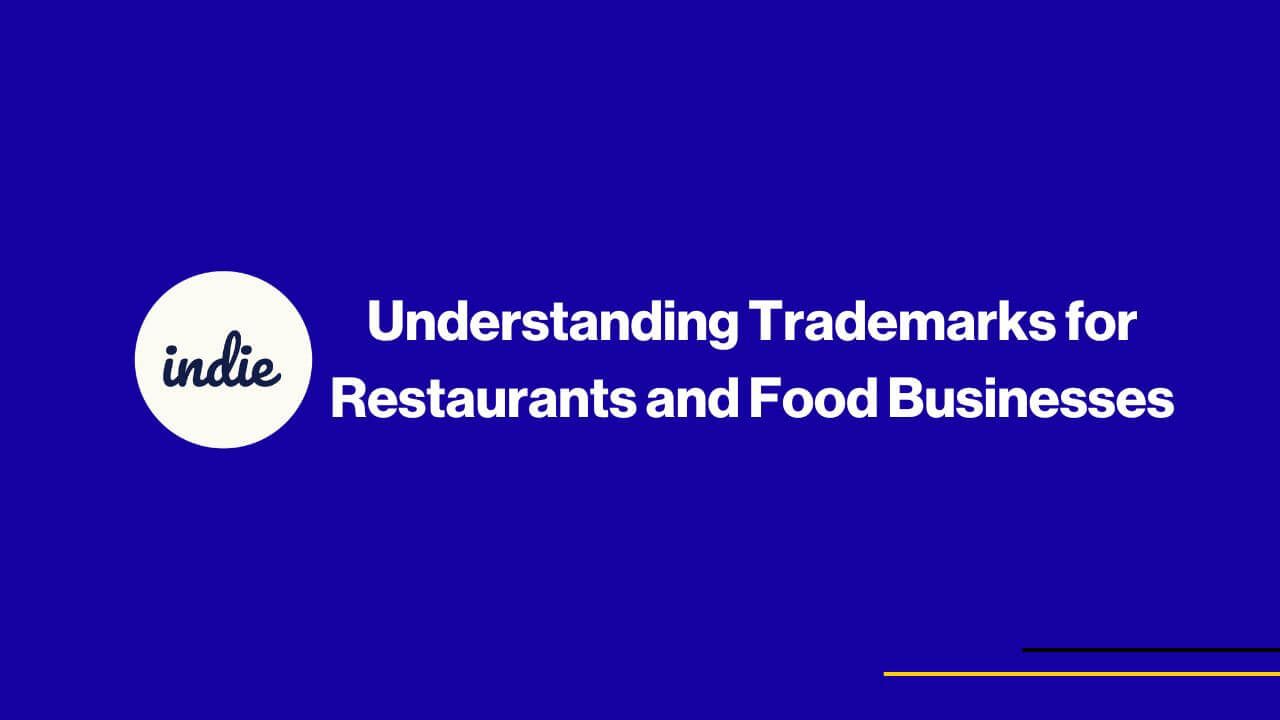In the fast-paced food industry, where competition is fierce and trends change rapidly, creating a strong and memorable brand identity is key to success. A standout name, logo, or slogan not only draws customers in but also keeps them coming back. However, standing out isn’t enough—you need to ensure your brand is legally protected. This is where trademarks come in.
A trademark isn’t just a piece of legal paperwork; it’s your armor in a crowded market, protecting what makes your restaurant or food business unique.
In This Article, We’ll Cover:
- What Is a Trademark in the Food Industry?
- Why Trademarks Are Essential for Food Businesses
- Challenges in Trademarking for Food Businesses
- How Sleight Law Can Help Protect Your Brand
- Steps to Trademark Your Restaurant or Food Business
What Is a Trademark in the Food Industry?
A trademark is a legal protection for the unique elements of your brand, such as:
- Name: A distinctive restaurant name like “Shake Shack.”
- Logo: The instantly recognizable Taco Bell bell design.
- Slogan: Memorable taglines like “I’m Lovin’ It” by McDonald’s.
For restaurants and food businesses, trademarks prevent competitors from misusing your brand identity and help establish lasting trust with customers.
Why Trademarks Are Essential for Food Businesses
- Protecting Brand Identity: Trademarks prevent others from using similar names, logos, or slogans that could confuse customers.
- Building Credibility: Registered trademarks signal professionalism and establish trust among your audience.
- Facilitating Growth: Trademarks protect your brand as your business expands into new markets, both locally and internationally. Learn more about international trademark protections through the World Intellectual Property Organization (WIPO).
- Avoiding Legal Disputes: Without a trademark, another business could claim ownership of your brand elements, leading to costly disputes.
Challenges in Trademarking for Food Businesses
While trademarks are vital, food businesses face specific challenges, including:
- Generic or Descriptive Names: Names like “Pizza Place” or “Fresh Eats” are difficult to trademark because they describe the product instead of being unique.
- Unintentional Infringement: Restaurants may accidentally choose names or logos that conflict with existing trademarks. A comprehensive trademark search can help avoid this.
- Incomplete Protection: Filing trademarks for only part of your brand (e.g., the name but not the logo) leaves gaps in protection.
For guidance on choosing a strong and unique trademark, visit the Small Business Administration’s Trademark Guide.
How Sleight Law Can Help Protect Your Brand
At Sleight Law, we specialize in helping restaurants and food businesses secure their trademarks. Here’s how we can assist:
- Comprehensive Trademark Search: Our team uses advanced tools to ensure your trademark is available and doesn’t conflict with existing marks.
- Filing a Strong Application: We handle the legal complexities of submitting a trademark application, ensuring accuracy and compliance with USPTO requirements.
- Managing Disputes: If someone challenges your trademark or accuses you of infringement, we’ll guide you through the legal process.
- Ongoing Monitoring and Renewal: We help you maintain your trademark over time, ensuring it’s renewed and protected from potential infringers.
Steps to Trademark Your Restaurant or Food Business
Follow these steps to protect your brand effectively:
- Choose a Strong Trademark: Select a unique name, logo, or slogan that stands out and qualifies for protection.
- Conduct a Trademark Search: Avoid potential conflicts by working with Sleight Law to verify that your desired trademark is available.
- File Your Application: Submit your application to the USPTO with Sleight Law’s expert guidance to ensure it’s complete and accurate.
- Respond to Office Actions: If the USPTO raises questions or objections, Sleight Law will handle the responses.
- Monitor and Maintain Your Trademark: After approval, we can help you keep your trademark secure through renewals and monitoring for infringement.
Looking for More Insights?
Want to explore trademarks in greater depth? Check out these resources:
- Trademark Basics: Everything You Need to Know Understand the fundamentals of trademark law and how it applies to your business.
- Legal Consequences of Trademark Mistakes Learn how to avoid common pitfalls in trademark applications and protect your brand assets.

